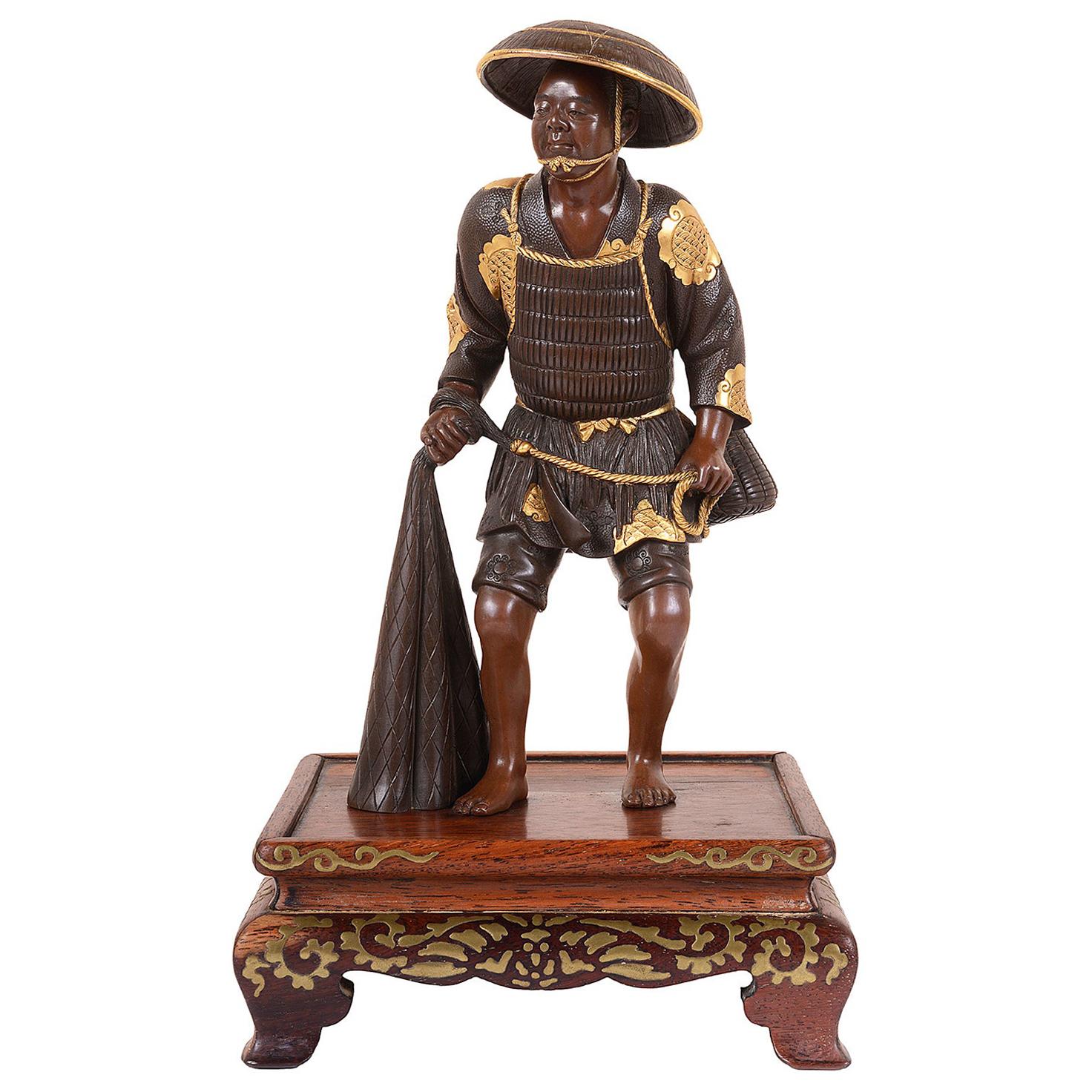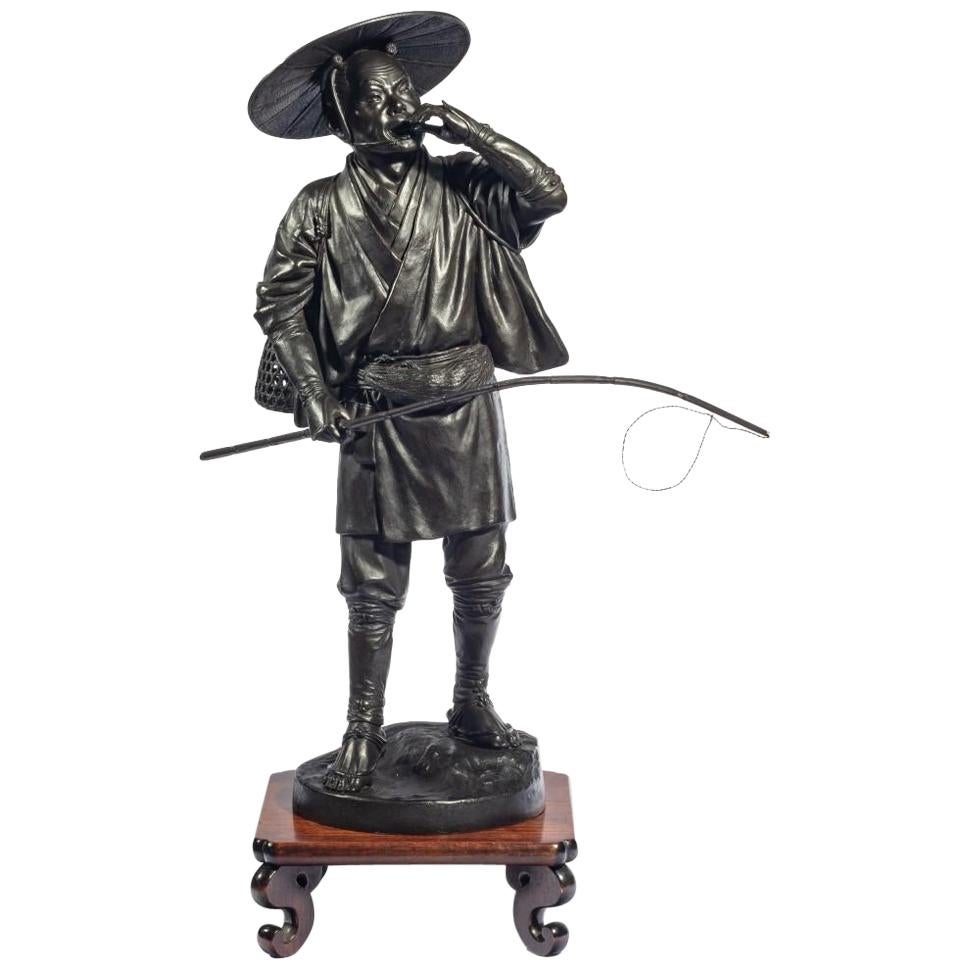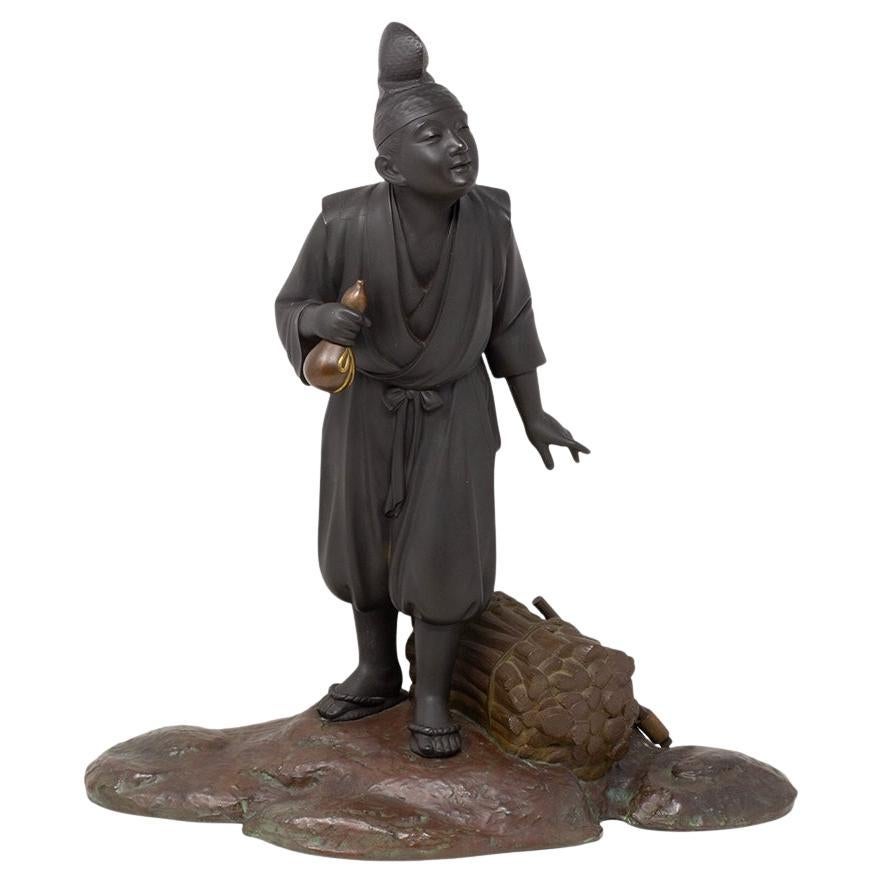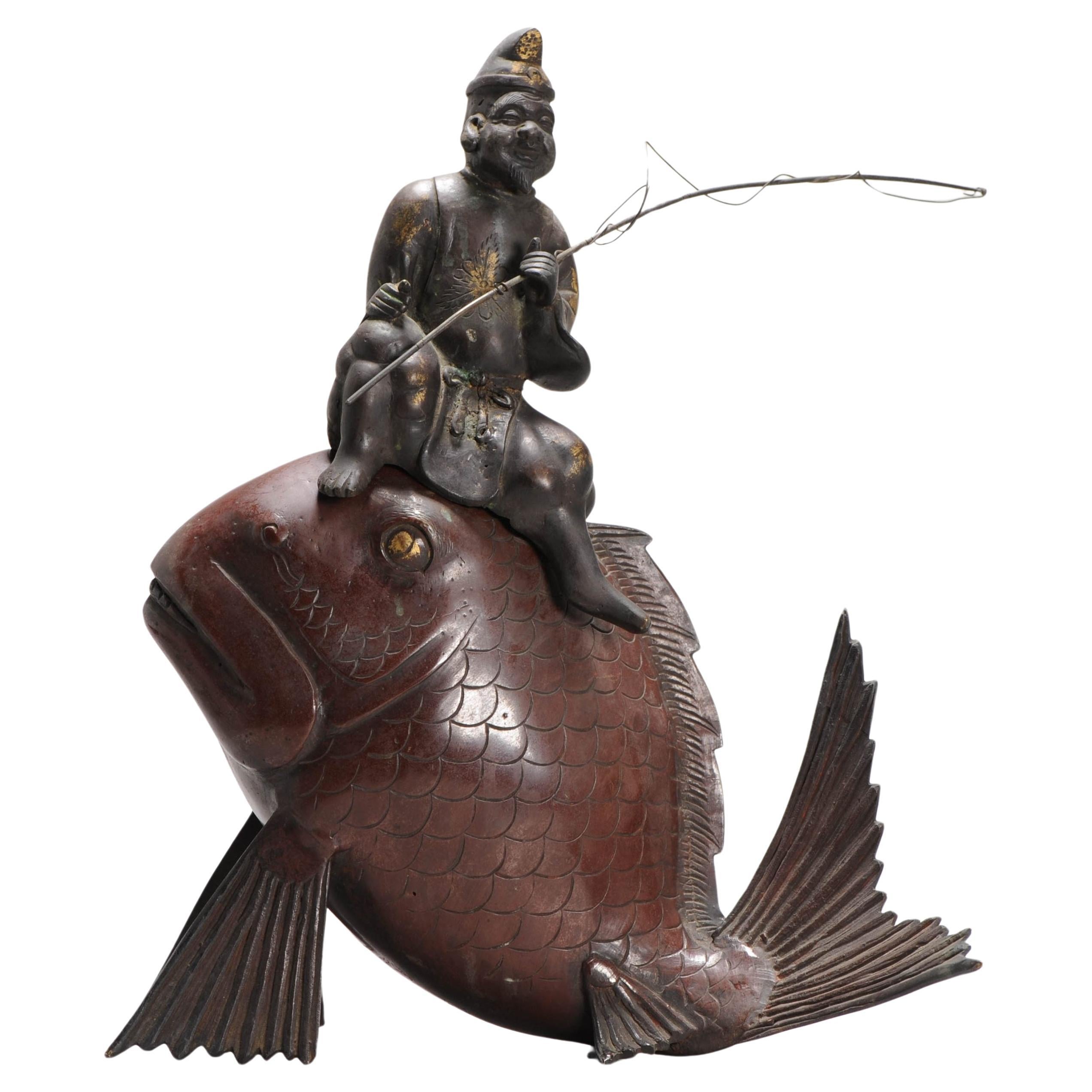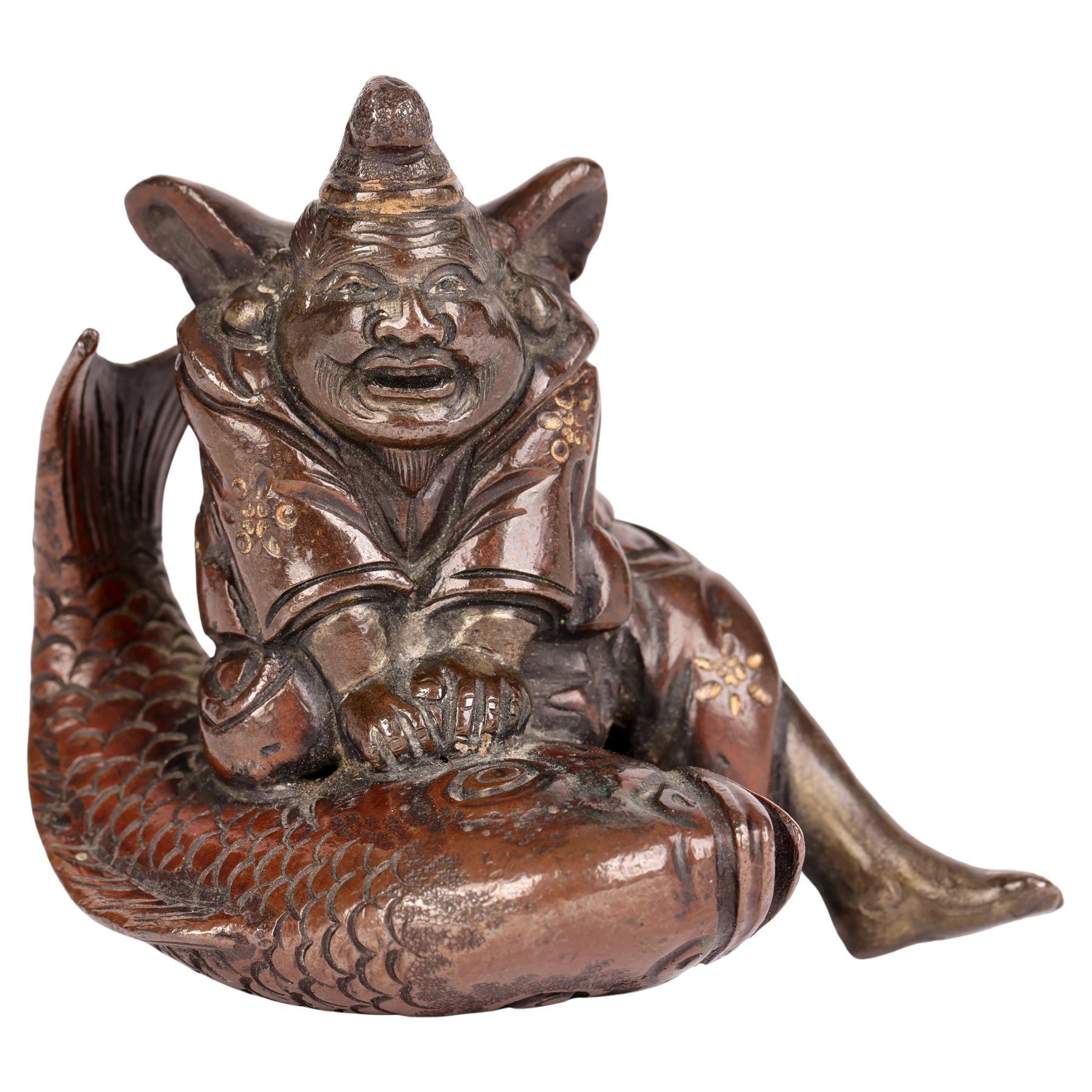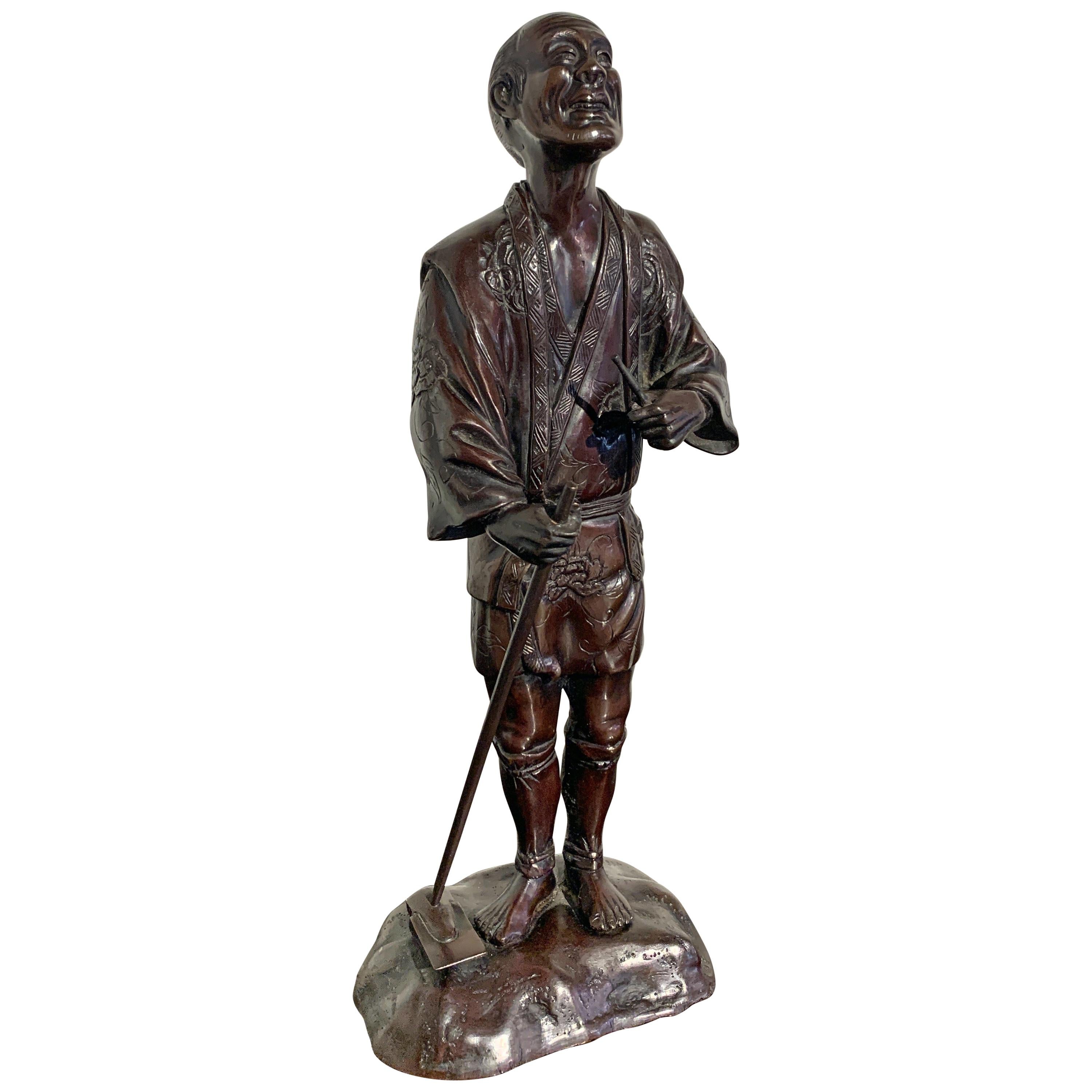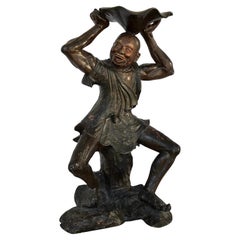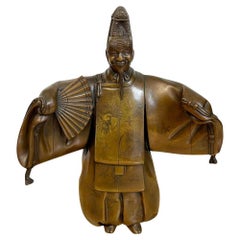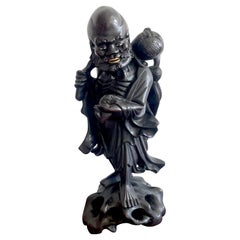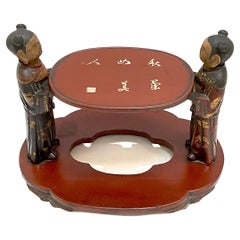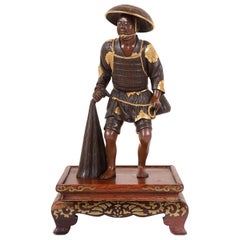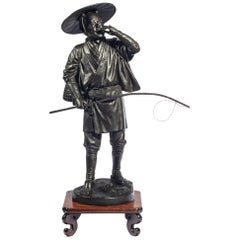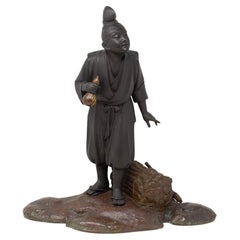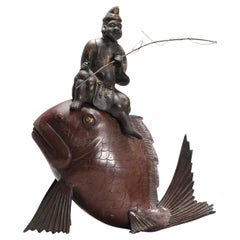Items Similar to Meiji Bronze Fisherman Okimono, Sealed Masatsune Saku
Want more images or videos?
Request additional images or videos from the seller
1 of 21
Meiji Bronze Fisherman Okimono, Sealed Masatsune Saku
$2,360
$3,25027% Off
£1,790.71
£2,466.0327% Off
€2,047.52
€2,819.6827% Off
CA$3,296.28
CA$4,539.3727% Off
A$3,665.01
A$5,047.1627% Off
CHF 1,913.67
CHF 2,635.3527% Off
MX$44,612.16
MX$61,436.2327% Off
NOK 24,417.58
NOK 33,625.9027% Off
SEK 22,878.10
SEK 31,505.8627% Off
DKK 15,281.03
DKK 21,043.7927% Off
Shipping
Retrieving quote...The 1stDibs Promise:
Authenticity Guarantee,
Money-Back Guarantee,
24-Hour Cancellation
About the Item
Meiji Bronze Fisherman Okimono, Sealed Masatsune saku
Japan, Meiji period (1868–1912)
A fine and rare Meiji period bronze Okimono of a fisherman by Masatsune Saku, originating from Japan and crafted during the Meiji period (1868–1922). This exquisite piece is a notable example of the Tokyo School's artistry, dating to the late 19th century.
The Okimono depicts a fisherman seated on a four-rung ladder, holding a bamboo fishing rod. The craftsmanship is impeccable, with the piece beautifully cast and realistically modeled. The sculpture is composed of three separate parts: the removable fisherman, the detachable bamboo fishing rod, and the ladder. This design allows for easy transport and assembly.
The fisherman figure measures 7.5 inches high, 4.5 inches wide, and 6 inches deep and is intricately detailed, capturing the essence of a traditional Japanese fisherman. The ladder, which the fisherman sits on, measures 10.25 inches high, 6.5 inches wide, and 6.5 inches deep. The entire piece, including the extended bamboo fishing rod, stands at an impressive 15 inches high, with an overall width of 13 inches and a depth of 6.5 inches.
Signed with the seal of Masatsune saku on the top of the ladder, this Okimono is a testament to the masterful craftsmanship and artistic heritage of the Meiji period. It is a superb addition for collectors of Japanese art and historical bronzes, embodying both aesthetic beauty and cultural significance.
Overall Measurements:
15- inches high x 13- inches to the end of the bamboo fishing rod x 6.5 inches wide
The figure alone measures 7.5 inches high, 4.5 inches wide, and 6 inches deep
The ladder alone measures 10.25 inches high, 6.5 inches wide, and 6.5 inches deep.
- Dimensions:Height: 15 in (38.1 cm)Width: 6.5 in (16.51 cm)Depth: 13 in (33.02 cm)
- Style:Meiji (Of the Period)
- Materials and Techniques:
- Place of Origin:
- Period:
- Date of Manufacture:1890s
- Condition:Wear consistent with age and use.
- Seller Location:West Palm Beach, FL
- Reference Number:Seller: 8677 / SDHU5T03891stDibs: LU2592329865462
About the Seller
5.0
Platinum Seller
Premium sellers with a 4.7+ rating and 24-hour response times
Established in 1996
1stDibs seller since 2017
1,401 sales on 1stDibs
Typical response time: <1 hour
- ShippingRetrieving quote...Shipping from: West Palm Beach, FL
- Return Policy
Authenticity Guarantee
In the unlikely event there’s an issue with an item’s authenticity, contact us within 1 year for a full refund. DetailsMoney-Back Guarantee
If your item is not as described, is damaged in transit, or does not arrive, contact us within 7 days for a full refund. Details24-Hour Cancellation
You have a 24-hour grace period in which to reconsider your purchase, with no questions asked.Vetted Professional Sellers
Our world-class sellers must adhere to strict standards for service and quality, maintaining the integrity of our listings.Price-Match Guarantee
If you find that a seller listed the same item for a lower price elsewhere, we’ll match it.Trusted Global Delivery
Our best-in-class carrier network provides specialized shipping options worldwide, including custom delivery.More From This Seller
View All18th Century English Wood Carved Standing Chinese Attendant with Lotus Bowl
Located in West Palm Beach, FL
18th century English wood carved standing Chinese attendant with lotus bowl, The well carved and decorated figure with glass eyes, holding a 10 inch...
Category
Antique Late 18th Century English Chinoiserie Figurative Sculptures
Materials
Gesso, Glass, Wood, Paint
Meiji Period Bronze Figure of a Noh, With Mask
Located in West Palm Beach, FL
Meiji Period Bronze Figure of a Noh, with Mask
Japan, circa 1900s
A captivating Meiji period bronze figure of a Noh performer adorned with ...
Category
Early 20th Century Japanese Meiji Metalwork
Materials
Bronze
$2,360 Sale Price
20% Off
19th Chinese Carved Hardwood Figure of an Immortal Holding a Bat
Located in West Palm Beach, FL
This exquisite late 19th-century Chinese carved hardwood figure depicts an immortal holding a bat, symbolizing happiness and good fortune in Chinese culture. The workmanship is exemp...
Category
Antique Late 19th Century Chinese Chinese Export Sculptures and Carvings
Materials
Bone, Hardwood
$1,036 Sale Price
20% Off
19th C. Chinese Figural Carved Wood Lacquer Scholars/ Offering / Opium Stand
Located in West Palm Beach, FL
19th C. Chinese Figural Carved Wood Lacquer Scholars/ Offering / Opium Stand
Chinese 19th Century
A truly unique and remarkable piece from 19th-century China, this figural carved w...
Category
Antique Late 19th Century Chinese Chinese Export Lacquer
Materials
Shell, Wood, Lacquer
$1,590 Sale Price
20% Off
Austrian Cold Painted Figure of a Musician, after Franz Bergmann
By Franz Bergmann
Located in West Palm Beach, FL
Austrian Cold-Painted Figure of a Musician, after Franz Bergmann
Austria, circa 1900s
An expressive Austrian cold-painted figure of a Bedouin musician, crafted in the early 1900s aft...
Category
Early 20th Century European Belle Époque Figurative Sculptures
Materials
Metal
$1,996 Sale Price
29% Off
Chinoiserie Style Figural Pottery Attendant Lamp
Located in West Palm Beach, FL
Chinoiserie Style Figural Pottery Attendant Lamp
1960s
Height: 26 in Width: 8 in Depth: 8 in
Revel in the exotic allure of this Chinoiserie style figu...
Category
20th Century Chinese Export Table Lamps
Materials
Pottery, Hardwood
$1,000 Sale Price
20% Off
You May Also Like
Meiji Period, Miyao Bronze Figure of a Fisherman
By Eisuke Miyao 1
Located in Brighton, Sussex
A fine quality Meiji period (1868-1912) Japanese Miyao bronze patinated bronze figure of a fisherman holding his net, having gilded highlights and mounted...
Category
Antique Late 19th Century Japanese Figurative Sculptures
Materials
Bronze
Meiji Period Bronze of a Cricket Catcher
Located in Lymington, Hampshire
A Meiji period bronze of a cricket catcher, shown holding a whistle to his mouth with his left hand and a long rod in his right hand, wearing traditional clothing with a wide-brimmed...
Category
Antique 19th Century Japanese Meiji Figurative Sculptures
Materials
Bronze
Japanese Bronze Okimono Sculpture by Yamamoto Kozan
Located in Newark, England
YOUNG MAN WOOD CUTTING
From our Japanese collection, we are pleased to offer this Japanese Bronze Okimono by Yamamoto Kozan. The Japanese Bronze Sculpture cast in Bronze with a natu...
Category
Early 20th Century Japanese Meiji Sculptures and Carvings
Materials
Bronze
Antique Japanese Bronze / copper Statue Incense Burner Fisherman on a fish
Located in Amsterdam, Noord Holland
a very nice statue of a fisherman on a fish
Condition
40 x 35 cm. Good condition with sign of ware.
Period
19th century
Category
Antique 19th Century Japanese Meiji Ceramics
Materials
Metal, Bronze
$3,154 Sale Price
20% Off
Japanese Meiji Gilt Patterned Bronze Figure of a Fisherman
Located in Bishop's Stortford, Hertfordshire
A delightful antique Japanese Meiji Bronze portrayal of a fisherman dating from the 19th century. The fisherman is portrayed with a very large fish and sitting on it to hold it down....
Category
Antique 19th Century Japanese Meiji Metalwork
Materials
Bronze
Japanese Tokyo School Bronze Okimono of a Farmer, Meiji Period
Located in Austin, TX
A very fine and detailed Tokyo School cast bronze okimono (decorative sculpture) of a smiling farmer, Meiji period, late 19th century, Japan.
The e...
Category
Antique Late 19th Century Japanese Meiji Sculptures and Carvings
Materials
Bronze
